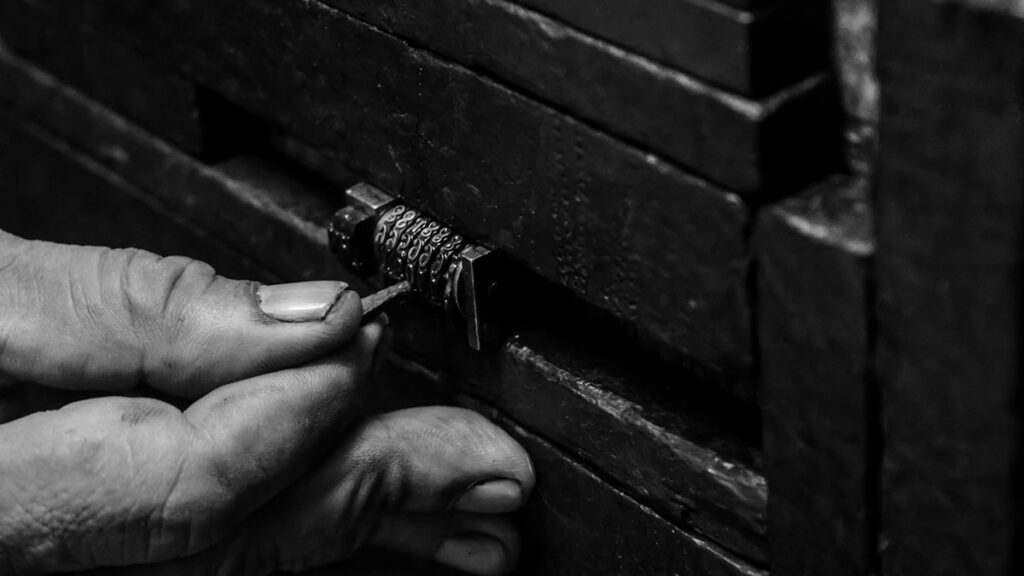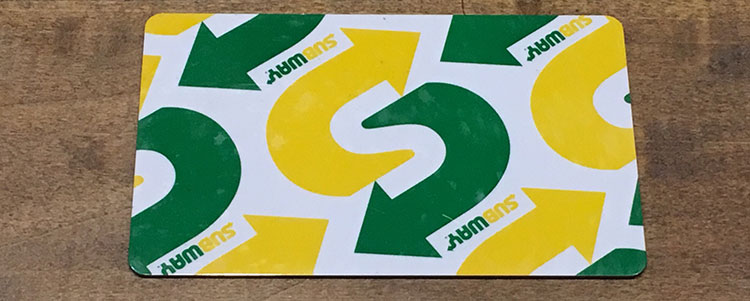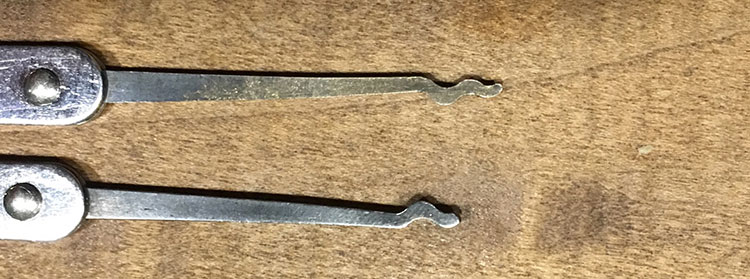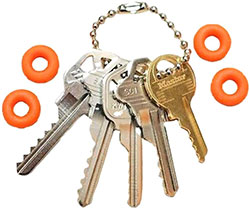
Who doesn’t think it’s cool to be able to beat a lock without the key? It’s how you bypass locks, and the answer is – nobody. Locksmiths even do it.
If you’ve ever locked yourself out of your house or business by accident you know that it can completely ruin your day. If you want to potentially save yourself a lot of money, get involved in a new hobby, and explore a oft forgotten skillset, then I highly recommend getting into lockpicking.
For those that are interested and learn best in a group environment, you may want to check to see if there are any TOOOL clubs within your area. They’re probably one of the best sources to learn from. Lockpick Extreme is another great company that I have a lot of respect for within the picking community that you may want to check out.
I don’t want to just focus on lockpicking in this article though. Don’t get me wrong, it’s an incredibly useful skill, but I would like to take a look at that and other ways that you can bypass locks. That way if you ever get locked out of your house in the middle of winter, you may be able to get in without having to stand outside in the snow for five hours.
4 Ways to Bypass Locks
So, without further ado, let’s take a closer look at some of the most practical and readily available means to get through a locked door.
Shrum Tool
This is hands down my most useful tool as a locksmith. I use it throughout the day, every day. And though the majority of what I use it for involves rekeying, lock maintenance/repair, and the like, it can also serve as a useful lock bypass tool. Let’s say that your car is in the shop, so you grab your other set of car keys and take your wife’s car to work. You’re supposed to open the store that morning, and it’s not until you get there that you realize that the key to work is on your other key ring. This is where a shrum tool can come in handy.

Due to the Americans with Disabilities Act, most businesses that you’ll come across today have a panic bar system set up on the front doors. For whatever reason, people often don’t use a deadbolt on these types of doors either. You can often just insert a shrum tool through the weather stripping and use it in a similar manner as a credit card to bypass the lock.
The Mayhew Tools ProGrip Pick isn’t a shrum to per se, but it’s functionally the same and it does the exact same thing. These are great to keep stored in your vehicle. It’s even the proper length if you needed to get into a commercial property. You would reach the hook part of the tool past the latch and then draw it towards you. As long as there’s no deadbolt system that’s locked as well, the door should easily open.
Credit Card
Don’t underestimate the classic credit card trick. I’ve had to use this more times than I can count, and you’d be surprised by how many times that it actually works. I’ve found that those little thin promo cards you get in the mail for Progressive, Lowe’s, or whatever else seem to work pretty well for this. They’re thinner than a typical credit card, and so they bend around door frames better.

That being said, sometimes a thicker card is what you want. I keep used up gift cards for this purpose. Regardless of what type of card that I use to open a door, it will typically only have a lifespan of 1-2 doors before it’s so beat up that it’s no longer useable.
Keep in mind that a credit card won’t get you through a locked deadbolt. What a credit card will get you in is the actual doorknob proper. And even then, it won’t get you through every time. The reason that a credit card works is because the great majority (in my opinion) of doorknobs out there aren’t lined up correctly with the strike plate when they’re installed. It’s because of this that the dead strike isn’t able to function correctly.
A lot of people shut their door and it’ll click. Then they push it further so that it clicks once more – thinking that this is actually shutting the door. What they’ve done is push the dead strike into the hole so that it no longer can accomplish its job. When this happens, a credit card works wonderfully for getting you into that door.
Good Ol’ Fashioned Picking
You can theoretically get into any lock on the planet that requires a key through the art/science of lockpicking. In reality, this is a heck’ve a lot harder than it looks. It makes me laugh when I watch shows such as NCIS where the agents are able to pick a lock open in all of two seconds flat. That’s not reality. Picking takes time, even if you’re one of the best pickers on the planet.
Personally, I readily admit that I don’t come close to that. I’m an average picker at best. I can regularly get into Kwikset locks, Master padlocks, and occasionally some Schlage residential locks. The majority of everything else gets pretty hard to pick.
That being said, I’m not trying to discourage you from improving your picking skills. It’s a valuable skill, and it’s a lot of fun. I just want you to understand that it can be potentially frustrating. However, lockpicks are very convenient to carry and easy to access. There are potentially some laws depending on where you live that may make it illegal to own lockpicks (so that might be something you want to look into), so take that into consideration.
The Mookic Furniture Hardware Set is reasonably priced for what you get. If you’re going to buy yourself some picks, just know that on a daily basis the picks that I use are a hook and a rake. Everything else is something of a novelty, in my opinion.

There are multiple types of rakes, and I do think that having various types of them is very beneficial, but you really should be able to get into where you need to get with just these two basic types.
Turning tools are something that you may want to delve a little deeper into though. Though they’re not as cool of a tool as a lockpick, I’ve found that they’re probably the most important piece of the puzzle tool-wise when it comes to picking a lock. If you have a turning tool that won’t fit into the keyway, you’re screwed. If the turning tool takes up too much of the keyway, you’re screwed.
Thankfully, there are a lot of great turning tools available out on the market. Personally, I prefer the stiffer ones. The springy turning tools don’t give me as much feedback as I would like. Different strokes, different folks, however, so get whatever you find works for you best.
Bump Keys
Yet another way that you can get through a lock is via bump keys. A bump key is basically a “hardware hack.” The way a bump key is made is so that it can bump all of the internal pins up and above the shear line just long enough simultaneously for you to be able to turn the key and open the lock. I typically use these as a last resort as I don’t have as much success with them as I do with picking. They are handy to keep around though, and as far as I know, there isn’t as much eyebrow raising when people see that you have one of these compared with lockpicks.

The way you work it is to insert the key into the keyway, and then pull it out one pin (pull out one cut of the key). You then slap the key hard into the keyway while keeping tension on the key at the same time. It normally takes a couple of times, but the lock should eventually open. If you’re looking at purchasing your own, the three most common keyways you’ll find are KW1, SC1, and M1. I would also recommend getting some type of rubber bumper of sorts to put in between the key and the lock.
You’re going to want something with enough springiness to allow you to continually hammer against the end of the key without having to manually reset the key each time you strike it. What I mean by this is that you want a rubber pad that will compress enough to allow the key to go all the way into the keyway – jolting the pins – when you strike it, but that will be springy enough as well to shoot the key back to the initial position.
If you’re able to make something akin to this out of something you’ll be able to bump the lock exponentially quicker than you would ever be able to do otherwise. Just keep in mind that if you have Kwikset Smartkey knobs on your house, this method won’t work for entry.
Final Thoughts
When it comes to lock picking, knowledge is not a crime. If you know how to shoot a rifle, you know how to kill somebody. How is picking a lock to open a door considered more dangerous and automatically a sign of criminal intent? Knowledge does not necessarily equate to criminality.
If you consider the fact that something around 93.7% of all break-ins do not involve picking, then you’ll understand that to consider picks the ill-defined term of a “burglary tool” is incredibly naïve. The ability to know how to bypass locks can not only prevent your day from being ruined should you misplace your keys but can also better help you to protect your home and business as well.
If you want off-the-shelf door-hardening equipment, look into Armor Concepts. They sell complete hardware to reinforce residential doors.
If you know the ways that somebody could get past your locks, then you can better figure out ways to protect your buildings (see ways to slow a burglar). Knowledge truly is power when it comes to the subject of lock bypassing/picking. If you’re looking at learning more about lockpicking and bypassing, I highly recommend checking out both Bosnian Bill and the Lockpicking Lawyer on YouTube. As far as I’m concerned, they’re probably two of the best lockpickers on the planet.
Are there other methods that you’re aware of we didn’t cover above? Other tools? Have you experience with having to utilize any of these? Let us know in the comments below!


5 comments
Don’t forget the value of a section of weedwacker line for outward swinging doors! I use this trick on a weekly basis as a fireman. Great article, just wanted to add another tool for the toolbox.
Can you give a bit more detail? What do you mean, how does it work?
Sure, so basically you take say a 3ft section of weed Wacker string. Slip it in the door jam. The curve of the string will allow it to go over and under the latch portion since it’s semi rigid and curved. Sawing motion back and forth slowly on each end to work it in, and the latch will be blocked. Pull door open. Obviously useless for deadbolts. But by assisting with pliers to slightly pry door away from jam, I’ve opened many metal doors with this technique using only a small coil of weed Wacker string and my Leatherman, so I always have this on me. Any further questions I’d love to chat and share tips!
-GA
Aaaaah – that makes perfect sense. Thanks for sharing.
Sure, so basically you take say a 3ft section of weed Wacker string. Slip it in the door jam. The curve of the string will allow it to go over and under the latch portion since it’s semi rigid and curved. Sawing motion back and forth slowly on each end to work it in, and the latch will be blocked. Pull door open. Obviously useless for deadbolts. But by assisting with pliers to slightly pry door away from jam, I’ve opened many metal doors with this technique using only a small coil of weed Wacker string and my Leatherman, so I always have this on me. Any further questions I’d love to chat and share tips!
-GA